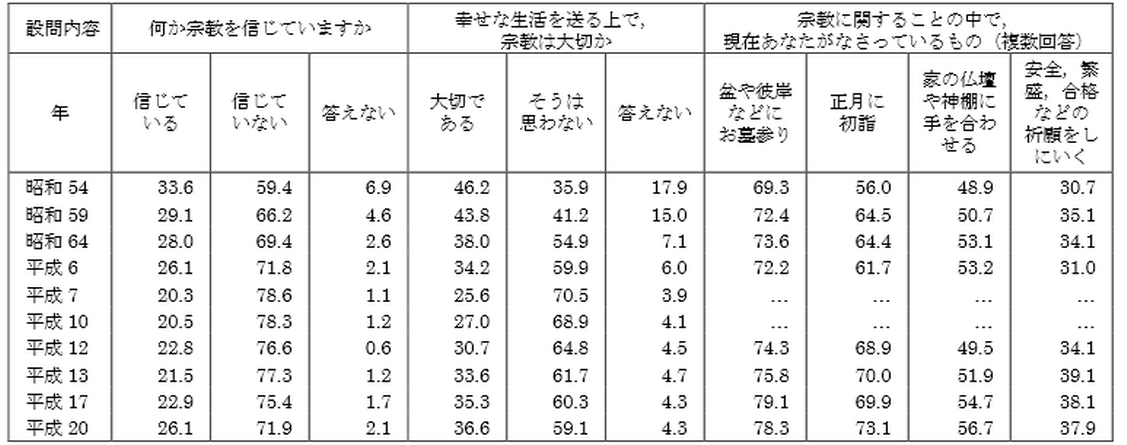 Collection of statistics on religion
Collection of statistics on religionThis collection of statistics on religion was published in 2015 by the Agency for Cultural Affairs (in the MEXT). With over 100 pages, it is very extensive. A good 50 pages are filled with the very detailed data collected in the ministry itself, which are, however, mostly of little use for assessing religion in Japan. The data on the number of believers is completely meaningless. The fact that this is far higher than the total number of the Japanese population cannot be explained by the fact, as the Ministry's culture department still tries to do, that many people in Japan belong to more than one religion. The problem was already clearly addressed 50 years ago in an English-language publication of the Ministry, namely "that it is next to impossible to make order out of the chaos that lurks behind the neat rows of figures. "* And the reason for this was clearly attributed there to the problem of data collection. At least the Ministry has apparently recognised the shortcoming and has now consulted a whole range of other sources. This gives a much better picture of religion in Japan.
Yomiuri Shimbun polls on religion (p. 63)
From 1979-2008, this newspaper conducted surveys ten times throughout Japan, which are summarised here as follows:
(The years are: 1979, 1984, 1989, 1994, 1995, 1998, 2000, 2001, 2005, 2008.)
Are you a believer? Is religion important to live happily? Which of these things do you do?
(Multiple answers possible)
yes no no answer yes no no answer Visits to cemetery at designated times
Shrine/temple visits on New Year's Day
Praying in front of the home altar
Prayer for safety, success, etc.
A clear drop in the positive answers to the first two questions can be seen in 1995 and 1998. This is related to the terrorist attacks by the Aum sect in 1995. After that, the percentages rise again, although not to the previous level. However, there is an upward trend in activities related to religion.


